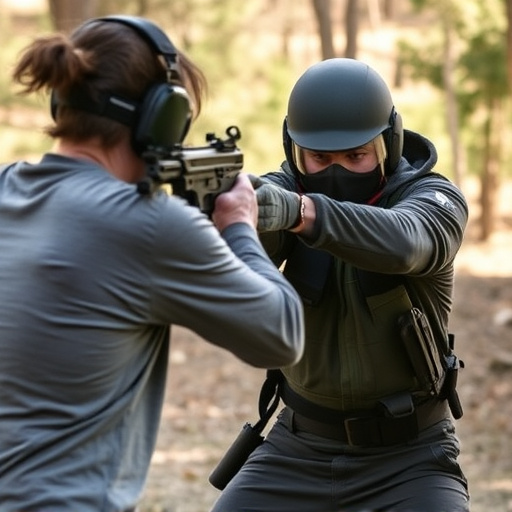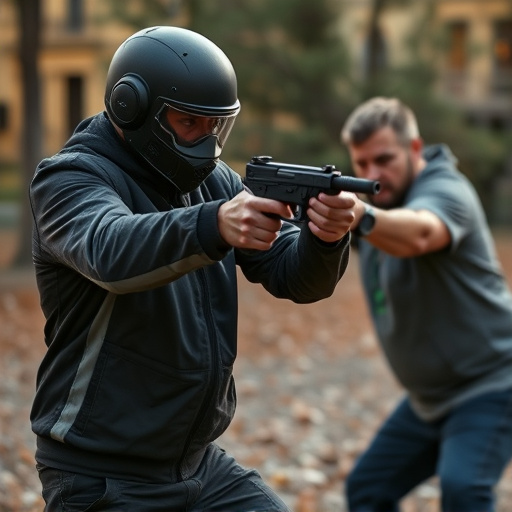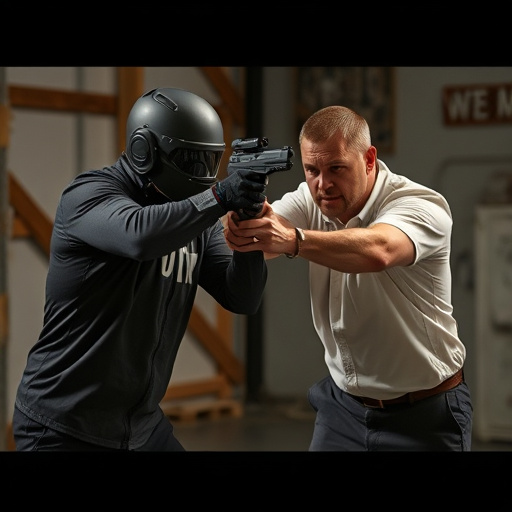Top stun gun manufacturers prioritize research and development to optimize electrical current spread patterns for effective, safe incapacitation. They focus on material science, conductivity analysis, advanced testing methods, precise current delivery, and smart safety features, ensuring their products meet high performance and safety standards. These efforts result in reliable stun guns capable of neutralizing attackers while minimizing off-target effects.
Electrical current spread patterns play a critical role in understanding the effectiveness of stun guns. This comprehensive guide delves into the intricate dynamics of how electricity flows, exploring factors that influence stun gun performance and safety. We analyze top manufacturers’ design considerations, material science, conductivity analysis, testing methods, and safety standards. By examining these aspects, we aim to highlight the most reliable stun gun manufacturers, ensuring consumers access safe and effective self-defense tools.
- Understanding Electrical Current Spread Patterns
- Factors Influencing Stun Gun Effectiveness
- Top Manufacturers' Design Considerations
- Material Science and Conductivity Analysis
- Testing Methods for Reliability Assessment
- Ensuring Safety in Stun Gun Technology
Understanding Electrical Current Spread Patterns

Electrical current spread patterns are crucial in understanding how and where energy flows through conductive materials, especially in the context of self-defense tools like stun guns. The most reliable stun gun manufacturers invest heavily in research to analyze these patterns, ensuring their products deliver maximum effectiveness. By studying how electric current distributes itself across various surfaces, materials, and distances, these manufacturers can design devices that optimally disrupt muscular functions, rendering an assailant temporarily incapacitated.
This analysis involves sophisticated simulations and real-world testing to predict and optimize the performance of stun guns under different scenarios. It considers factors like the conductivity of target materials, current density, and the physical geometry of the device’s contact points. The goal is to create a precise and reliable electric field that neutralizes an attacker while minimizing off-target effects, making these stun guns safer and more effective tools for personal defense.
Factors Influencing Stun Gun Effectiveness

The effectiveness of a stun gun is influenced by several key factors, including design and construction quality from the most reliable stun gun manufacturers. Advanced features like high voltage output, precise current delivery, and durable materials significantly enhance its impact. Moreover, the shape and size of the stun gun play a role in ease of use and maneuverability during emergency situations.
Additionally, the type and gauge of wires used in the stun device contribute to its overall performance. Thicker wires generally conduct electricity more efficiently, ensuring a stronger shock. Water resistance and impact resistance are other critical aspects, as they determine the stun gun’s reliability in diverse conditions. Ultimately, these factors collectively impact the device’s ability to incapacitate a target swiftly and effectively.
Top Manufacturers' Design Considerations

When it comes to electrical current spread pattern analysis, especially in the context of stun guns, understanding design considerations from top manufacturers is paramount. The most reliable stun gun manufacturers invest heavily in research and development to ensure their devices deliver precise, effective, and controlled shocks. They consider factors like electrode placement, material composition, and energy distribution to optimize the current spread pattern.
These industry leaders also prioritize safety features, incorporating advanced circuits and protective mechanisms to prevent unintended discharges and minimize risk to users and bystanders. By focusing on these design elements, they create stun guns that are not only highly effective but also reliable and safe in various real-world scenarios.
Material Science and Conductivity Analysis

In the realm of electrical current spread pattern analysis, Material Science and Conductivity Analysis play a pivotal role in understanding how different materials interact with electric currents. When considering the most reliable stun gun manufacturers, knowledge of conductivity is essential. These companies meticulously study the conductivities of various metals and alloys to ensure optimal performance in their stun guns. By selecting materials with high electrical conductivity, they can minimize current resistance, enhancing the device’s effectiveness while maintaining safety standards.
Furthermore, Material Science experts employ advanced techniques to analyze the microstructure of materials, identifying defects or irregularities that could disrupt current flow. This meticulous analysis ensures that each component in a stun gun—from the electrode contacts to the internal wiring—is optimized for efficient electricity distribution. As a result, users can expect consistent and powerful shocks, underscoring the commitment of top manufacturers to both reliability and safety.
Testing Methods for Reliability Assessment

When evaluating the reliability of stun guns, testing methods play a pivotal role in ensuring their consistent and dependable performance under various conditions. The most reputable stun gun manufacturers employ rigorous testing protocols to assess the spread pattern of electrical current. These tests simulate real-world scenarios, subjecting the devices to extreme temperatures, vibrations, and impact forces to gauge their integrity.
One crucial method involves analyzing the device’s ability to distribute electrical current evenly across its contact points. This ensures that stun guns deliver the intended shock effectively, regardless of the user’s grasp or environmental factors. By employing advanced diagnostic tools, manufacturers can identify any discrepancies in current flow, allowing them to refine their designs for optimal reliability.
Ensuring Safety in Stun Gun Technology

In the realm of stun gun technology, ensuring safety is paramount. Reputable manufacturers invest heavily in research and development to create devices with precise electrical current spread patterns, minimizing off-target effects while maximizing stun effectiveness. The most reliable stun gun manufacturers employ advanced engineering techniques to design gadgets that deliver controlled shocks, significantly reducing risks associated with excessive force or unintended collateral damage.
These industry leaders also prioritize user safety by incorporating smart features such as automatic shut-off mechanisms and adjustable voltage settings. By adhering to stringent quality control measures, they guarantee that each stun gun meets high safety standards. Choosing products from these manufacturers ensures consumers receive reliable, safe, and effective personal protection devices, fostering peace of mind in potentially dangerous situations.
Electrical current spread pattern analysis is a multifaceted discipline crucial for understanding and enhancing stun gun effectiveness. By delving into factors like material science, design considerations, and testing methods, we can ensure the safety and reliability of these devices. Among the top manufacturers, robust design choices and rigorous testing protocols have made them the most reliable sources for stun guns, leveraging advanced conductivity analysis to deliver consistent performance. This comprehensive approach guarantees that users receive a dependable and safe tool when protecting themselves in various situations.
